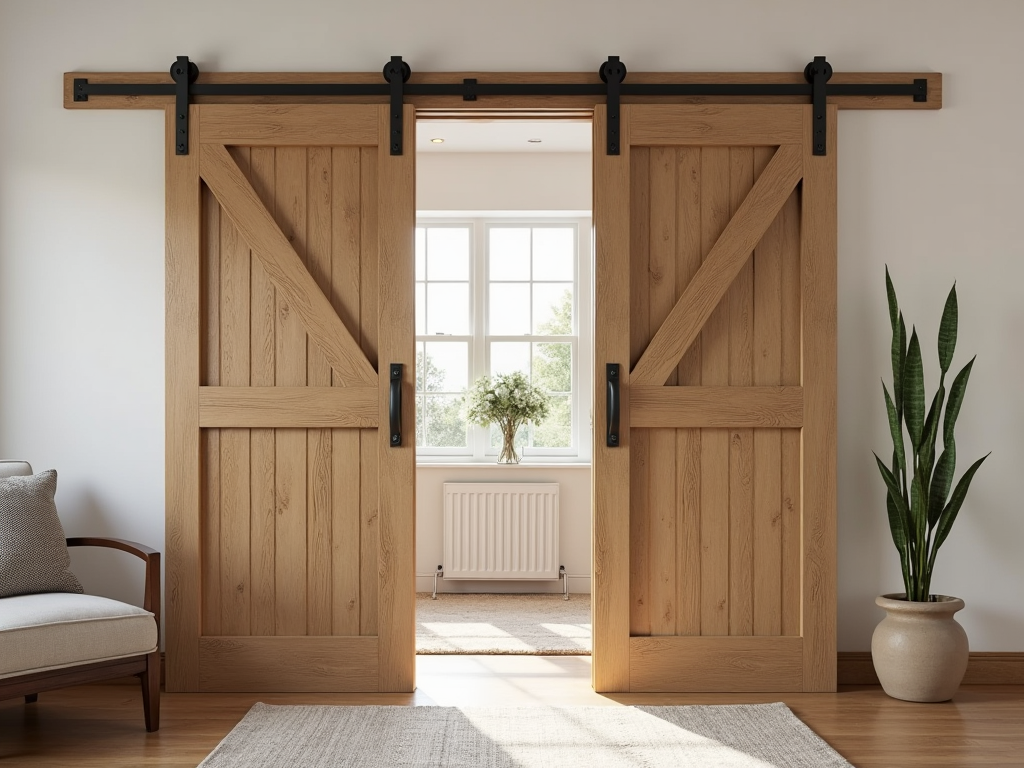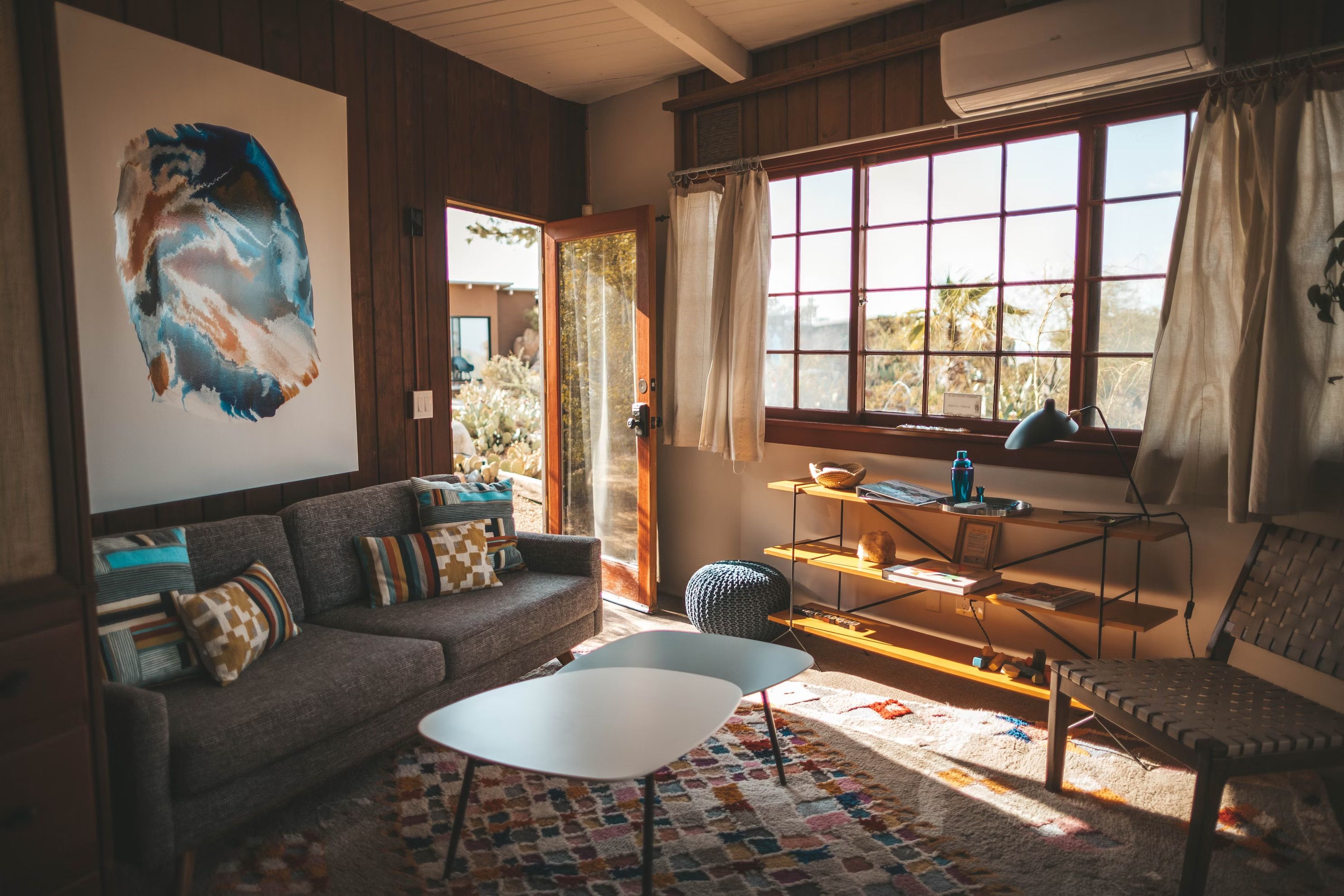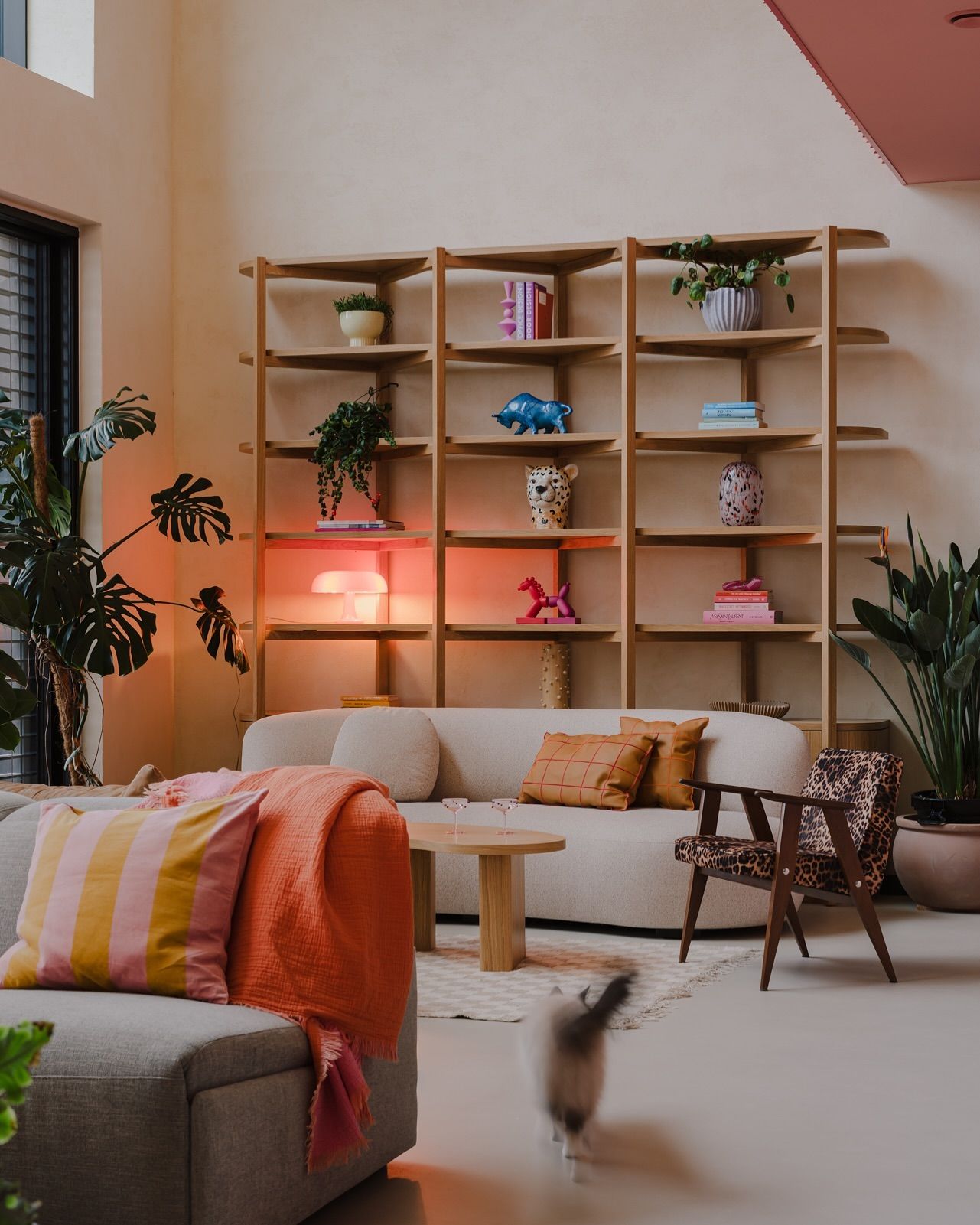Quick facts
Can't find the answer you're looking for? Please get in touch with our friendly team.
What size barn door do I need for a 60 inch opening?
For a 60-inch opening, you typically need a barn door that is 72 inches wide. This allows for a 6-inch overlap on each side, ensuring proper coverage and functionality. Consider the door's thickness and style to match your decor.
Can I use my existing door as a barn door?
Yes, you can use your existing door as a barn door if it meets certain criteria. Ensure it's the right size and weight for sliding hardware. You may need to refinish or repaint it to match your decor. Check the door's condition for durability.
What disadvantages can you see in a barn door?
Barn doors can be less secure than traditional doors, as they can be easily opened from the outside. They also require more wall space to slide open, which may limit furniture placement. Additionally, they may not provide the best sound insulation.
What is the purpose of barn doors?
Barn doors serve both functional and aesthetic purposes in home decor. They save space by sliding open instead of swinging, making them ideal for smaller areas. Additionally, they add a rustic charm and can enhance the overall design theme of a room.
Are barn doors in style in 2024?
Yes, barn doors remain in style in 2024. They continue to be popular for adding rustic charm and functionality to homes. Many homeowners appreciate their space-saving design and versatility in various interior styles, from modern to farmhouse.
What is the average cost to install a barn door?
The average cost to install a barn door ranges from $200 to $1,500. This includes the price of the door itself, which can vary based on materials and size, as well as installation costs. DIY options can reduce overall expenses.
What is an alternative to a barn door?
An alternative to a barn door is a pocket door, which slides into the wall to save space. Other options include bi-fold doors for smaller openings, traditional hinged doors for a classic look, or sliding glass doors for a modern and airy feel.
Category Overview
Introduction
Barn doors have become a standout feature in many modern homes, serving both functional and aesthetic purposes. These sliding doors draw inspiration from traditional barn architecture, infusing an element of rustic charm into your living space. More than just a passageway, barn doors enhance everyday life by providing comfort and utility, transforming mundane entrances into stylish focal points. Whether you’re looking to create a cozy reading nook or maximize storage in tight spaces, the presence of barn doors invites relaxation and accessibility.
Functionality
The primary function of barn doors is to separate spaces while optimizing the flow between them. Typically used in areas like living rooms, dining rooms, and even bedrooms, they slide open and closed without taking up the swing space required by traditional doors. This unique functionality makes them ideal for small rooms or as decorative room dividers. Additionally, some barn doors come with built-in shelving or can be adapted to serve as a stylish closet front, enhancing both form and function.
Design & Style
When it comes to design, barn doors are incredibly versatile. Common materials include wood—often reclaimed for that authentic touch—and increasingly popular metal finishes for a sleek look. Variations abound: from classic farmhouse styles with distressed finishes to minimalist designs featuring clean lines and vibrant colors. Personalization possibilities are endless; you can easily customize hardware and paint options to fit themes ranging from rustic to modern chic. This adaptability allows you to tie barn doors seamlessly into various decor styles while making a statement that's uniquely yours.
Practical Considerations
Selecting the right barn door involves considering several key factors. First and foremost is the size of your room; measure carefully to ensure the door fits well within your space without overwhelming it visually or taking away too much clearance when opened. Material choice is also crucial: heavier woods provide durability but may require more robust hardware systems compared to lighter materials like composite boards or metal frames designed for easy sliding action. Avoid common pitfalls such as selecting a style that clashes with existing decor or overlooking necessary installation adjustments that could impact usability.
Comparison and Alternatives
When comparing materials for barn doors, wood vs. metal is often at the forefront of decision-making. Wood offers warmth and classic appeal but requires regular maintenance to prevent wear over time; whereas metal presents an industrial chic vibe that’s low-maintenance but might feel cold in some settings. Additionally, round designs can offer softer aesthetics compared to traditional rectangular shapes that align closely with modern architectural lines. Consider your room size: larger spaces often benefit from wider double-door setups whereas compact areas may do better with single-panel versions.
Trends and Popular Items
Currently, trends lean towards sustainable materials such as reclaimed wood alongside innovative designs like transparent glass inserts which allow light while maintaining privacy—a great balance for contemporary homes! Among popular items are sliding hardware kits featuring rustic black metal accents paired with weathered wood for an authentic touch reminiscent of country charm integrated seamlessly into urban environments. In summary, barn doors are more than just functional features; they represent style choices that enhance your home's character while maximizing utility across various contexts—from cozy dens to vibrant entertainment areas—making them an appealing addition worth considering for any homeowner looking to elevate their living experience.


